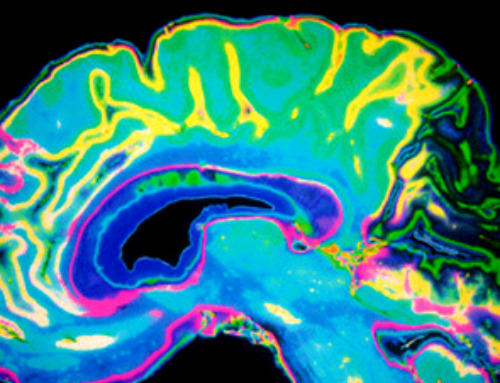| Something as simple as the motion of water drops on surfaces should actually be understood – one would think. In fact there are still numerous unanswered questions about the forces acting on a sliding droplet. | |
| A team of researchers from the Max Planck Institute for Polymer Research in collaboration with colleagues from TU Darmstadt has now discovered: In addition to surface energy and viscous friction within the droplet, electrostatics also play a significant role. | |
| The results were recently published in the journal Nature Physics (“Spontaneous charging affects the motion of sliding drops”). |
| Raindrops hit the car window and the wind pushes the drops to the side. Even today, no one has been able to precisely predict how the drops move on the windshield. Yet such an understanding is important in numerous areas, such as autonomous driving: For example, cameras installed in the windshield are supposed to keep an eye on the road and the traffic situation – for this, the surface of the windshield must be designed in such a way that the drops are completely blown down by the airstream and the view remains clear even in the rain. Other examples with the opposite sign are applications where drops need to stick to surfaces, such as spray paint or pesticides. | |
| “Until now, it was assumed that the surface coating was responsible for how the droplet moves on a surface – that is, the first few molecular layers,” says Prof. Hans-Jürgen Butt, who is director of the “Physics of Interfaces” department at the Max Planck Institute for Polymer Research. | |
| For example, it depends on the surface whether a spherical or a flat droplet shape is formed. If the drop likes the surface, it presses itself flat onto it to make as much contact as possible. If it does not like the surface, as in the case of the well-known lotus effect, it curls up. It was also clear that when a droplet moves, viscous friction – i.e. friction between the individual water molecules – occurs within the droplet, which also influences its movement. | |
Electrostatics cause differences in velocity |
|
| The team of researchers at the MPI for Polymer Research found that neither capillary nor viscoelastic forces can explain the differences in the speed at which droplets move across different surfaces. Questions were raised in particular by the fact that the droplets run at different speeds on different substrates – even if these substrates have an identical surface coating, where no differences would be expected. | |
| The researchers therefore first introduced a mysterious “extra force.” To track it down, Xiaomei Li, a Ph.D. student in Hans-Jürgen Butt’s department, organized a drop race. “I filmed the drops on different substrates, extracted velocity and acceleration profiles from their motion, calculated out the forces that were already known to calculate the force that we had not yet had a look at,” she explains. | |
| The astonishing result: the calculated force agrees with an electrostatic force that the researchers first described in a model a few years ago. “By comparing the experimental results with this numerical model, we can explain previously confusing droplet trajectories,” says Jun.-Prof. Stefan Weber, a group leader in Butt’s department. | |
| If previously neutral droplets slide over an insulator, they can become electrically charged: So electrostatics plays a significant role there. On an electrically conductive substrate, on the other hand, the droplet immediately releases its charge back to the substrate. | |
| “The electrostatic force, which no one had previously considered, therefore has a major influence: it must be taken into account for water, aqueous electrolytes and ethylene glycol on all hydrophobic surfaces tested,” Weber summarizes. | |
| These results will improve the control of droplet motion in many applications ranging from printing to microfluidics or water management to power generation via droplet-based mini-generators. |
News
Tiny Metal Nanodots Obliterate Cancer Cells While Largely Sparing Healthy Tissue
Scientists have developed tiny metal-oxide particles that push cancer cells past their stress limits while sparing healthy tissue. An international team led by RMIT University has developed tiny particles called nanodots, crafted from a metallic compound, [...]
Gold Nanoclusters Could Supercharge Quantum Computers
Researchers found that gold “super atoms” can behave like the atoms in top-tier quantum systems—only far easier to scale. These tiny clusters can be customized at the molecular level, offering a powerful, tunable foundation [...]
A single shot of HPV vaccine may be enough to fight cervical cancer, study finds
WASHINGTON -- A single HPV vaccination appears just as effective as two doses at preventing the viral infection that causes cervical cancer, researchers reported Wednesday. HPV, or human papillomavirus, is very common and spread [...]
New technique overcomes technological barrier in 3D brain imaging
Scientists at the Swiss Light Source SLS have succeeded in mapping a piece of brain tissue in 3D at unprecedented resolution using X-rays, non-destructively. The breakthrough overcomes a long-standing technological barrier that had limited [...]
Scientists Uncover Hidden Blood Pattern in Long COVID
Researchers found persistent microclot and NET structures in Long COVID blood that may explain long-lasting symptoms. Researchers examining Long COVID have identified a structural connection between circulating microclots and neutrophil extracellular traps (NETs). The [...]
This Cellular Trick Helps Cancer Spread, but Could Also Stop It
Groups of normal cbiells can sense far into their surroundings, helping explain cancer cell migration. Understanding this ability could lead to new ways to limit tumor spread. The tale of the princess and the [...]
New mRNA therapy targets drug-resistant pneumonia
Bacteria that multiply on surfaces are a major headache in health care when they gain a foothold on, for example, implants or in catheters. Researchers at Chalmers University of Technology in Sweden have found [...]
Current Heart Health Guidelines Are Failing To Catch a Deadly Genetic Killer
New research reveals that standard screening misses most people with a common inherited cholesterol disorder. A Mayo Clinic study reports that current genetic screening guidelines overlook most people who have familial hypercholesterolemia, an inherited disorder that [...]
Scientists Identify the Evolutionary “Purpose” of Consciousness
Summary: Researchers at Ruhr University Bochum explore why consciousness evolved and why different species developed it in distinct ways. By comparing humans with birds, they show that complex awareness may arise through different neural architectures yet [...]
Novel mRNA therapy curbs antibiotic-resistant infections in preclinical lung models
Researchers at the Icahn School of Medicine at Mount Sinai and collaborators have reported early success with a novel mRNA-based therapy designed to combat antibiotic-resistant bacteria. The findings, published in Nature Biotechnology, show that in [...]
New skin-permeable polymer delivers insulin without needles
A breakthrough zwitterionic polymer slips through the skin’s toughest barriers, carrying insulin deep into tissue and normalizing blood sugar, offering patients a painless alternative to daily injections. A recent study published in the journal Nature examines [...]
Multifunctional Nanogels: A Breakthrough in Antibacterial Strategies
Antibiotic resistance is a growing concern - from human health to crop survival. A new study successfully uses nanogels to target and almost entirely inhibit the bacteria P. Aeruginosa. Recently published in Angewandte Chemie, the study [...]
Nanoflowers rejuvenate old and damaged human cells by replacing their mitochondria
Biomedical researchers at Texas A&M University may have discovered a way to stop or even reverse the decline of cellular energy production—a finding that could have revolutionary effects across medicine. Dr. Akhilesh K. Gaharwar [...]
The Stunning New Push to Protect the Invisible 99% of Life
Scientists worldwide have joined forces to build the first-ever roadmap for conserving Earth’s vast invisible majority—microbes. Their new IUCN Specialist Group reframes conservation by elevating microbial life to the same urgency as plants and [...]
Scientists Find a Way to Help the Brain Clear Alzheimer’s Plaques Naturally
Scientists have discovered that the brain may have a built-in way to fight Alzheimer’s. By activating a protein called Sox9, researchers were able to switch on star-shaped brain cells known as astrocytes and turn them into [...]
Vision can be rebooted in adults with amblyopia, study suggests
Temporarily anesthetizing the retina briefly reverts the activity of the visual system to that observed in early development and enables growth of responses to the amblyopic eye, new research shows. In the common vision [...]





















